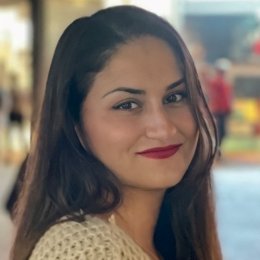Let’s Talk About Impact is a series that explores various aspects of making impact. We strive to make a change for the better, to make an impact, but what lies beyond this buzzword? Today we will dive deeper into consortium building. If making impact is a shared achievement, one possible route is to build a consortium. But how do you do that?
A consortium in this context refers to a group of organisations and individuals collaborating on a common research goal, often in the context of large grants like Horizon Europe. This group has a shared objective, the members offer complementary expertise and there is mutual commitment to collaboration. A consortium is one of the ways to join forces and generate an interdisciplinary knowledge pool, to solve a complex issue. As such, it is one of the ways to increase chances of making an impact.
How to build a consortium?
We asked Sofia Mutlu-Numansen, Strategic Grants Advisor at BMS, what common steps are when you are building a consortium. She suggests 5 key steps:
- Identify a Common Goal. Get clear on why you are setting up the consortium. Define the research problem or question.
- Map Expertise Needs. You can make a list of required disciplines, skills, and types of organizations. In this way, you can make sure to collect all expertise to reach your goal.
- Find Partners. Now it’s time to expand, looking around at partners to bring in this expertise. You can think broadly: academic institutions, industry, NGOs, public bodies, …
- Establish Relationships. For fruitful collaboration it is important to grow and foster relationships. You can think of networking at events, attending conferences, or through personal connections.
- Formalise the Consortium. Once you have a group of partners ready to go, the last step is to formalise the consortium. Clearly define roles and responsibilities and create a collaboration agreement.
Talking from experience
 BMS already sprouted multiple successful consortia. At the Professional Learning and Technology (PLT) section, Evelien Ydo is programme manager of two consortia that focus on learning communities: CLIC-IT and PowerUp!. Both of these consortia connect local partners to contribute to a grand challenge: the digital transformation and the energy transition respectively. PLT also just finished the GasErop! project which grew to thirty learning communities. We ask Evelien about her experiences and best practices.
BMS already sprouted multiple successful consortia. At the Professional Learning and Technology (PLT) section, Evelien Ydo is programme manager of two consortia that focus on learning communities: CLIC-IT and PowerUp!. Both of these consortia connect local partners to contribute to a grand challenge: the digital transformation and the energy transition respectively. PLT also just finished the GasErop! project which grew to thirty learning communities. We ask Evelien about her experiences and best practices.
Hi Evelien, what an impressive group of partners! How did these consortia come to be?
I would say that a key element is building on existing (long-term) relationships. As PLT, we have numerous partners that we work with. We actively work on building and fostering these relationships. Then, when a call arrives, we can act quickly and bring reach out to potential partners. Here, it is key to be able to make needs explicit: what does a partner need, what can you offer? Are there shared needs or goals? If you have that clear, you have a head start in forming a consortium with engaged partners that work together on a shared aim.
We also try to be visible and engaging as a group, using our LinkedIn, hosting events, and visiting our partners. Being visible and approachable hopefully helps to make new connections.
How do you keep your eyes on that shared goal?
Good question, that can indeed be challenging with so many partners. For me, the project proposal is leading here, that is the shared basis for our activities and our dot on the horizon. Of course, unexpected things may happen, but then still you can use the project proposal as a starting point for conversation. Another factor is the creation of a shared identity, one could even call it a brand. If the story and visuals of the project communication are clear, that creates consistency and hopefully unity. Then people want to feel like they belong to this story.
Your job as programme manager seems quite unique, can you tell more about that?
What I hope to do as programme manager of these consortia, is to alleviate secondary tasks from the researchers in the consortium so they can focus on the research. They can use their expertise and talents in research, I can use mine in networking, marketing, and project management. It’s a win-win and increases the impact of a project. As far as I know, PLT is the only section with such a position, this role is already budgeted for in the project proposal.
Colophon
This series is composed by BMS Research Support. While most content applies to a wider array of disciplines, some may resonate more with a BMS audience. If you work at BMS and have any impact-related questions, reach out to Tom Boogerd. If you work at another faculty, you can still reach out and we can find a colleague of your faculty who can help.
With special thanks to:
This news item is also available as a page on our website.









